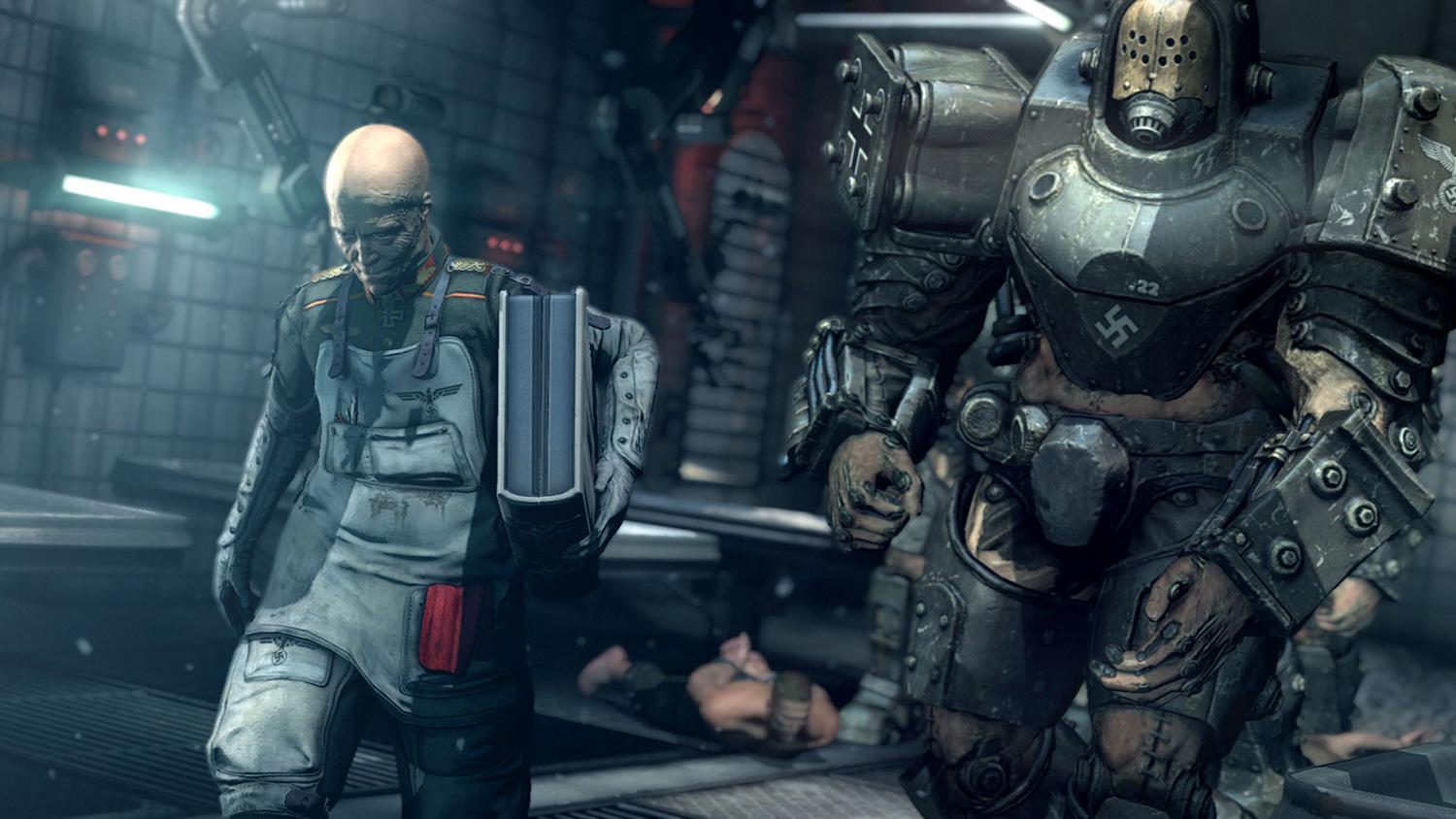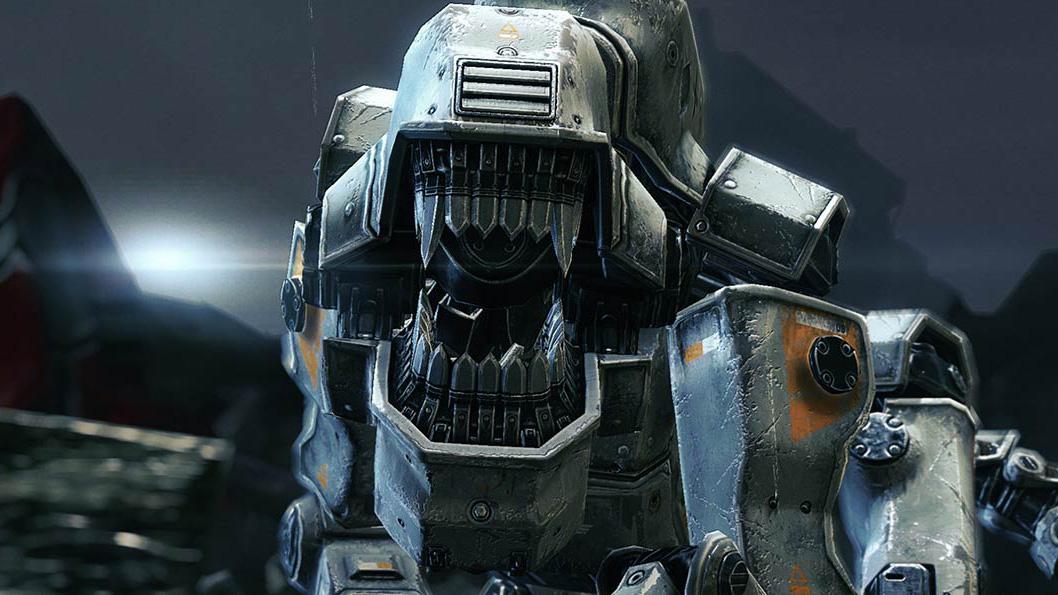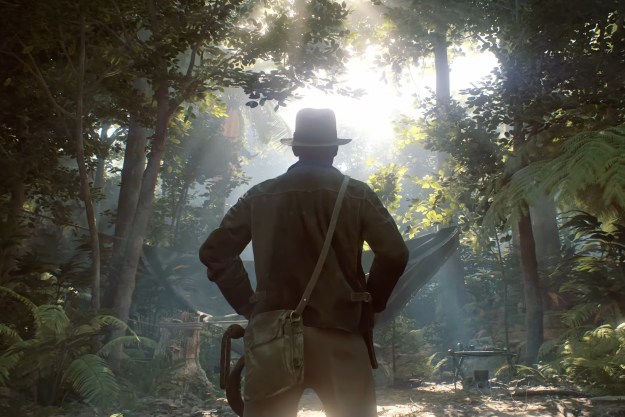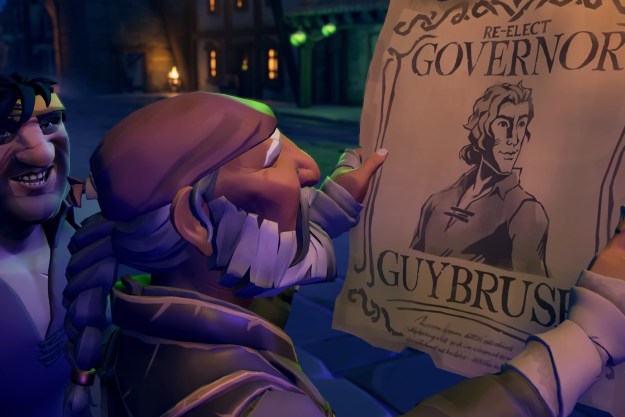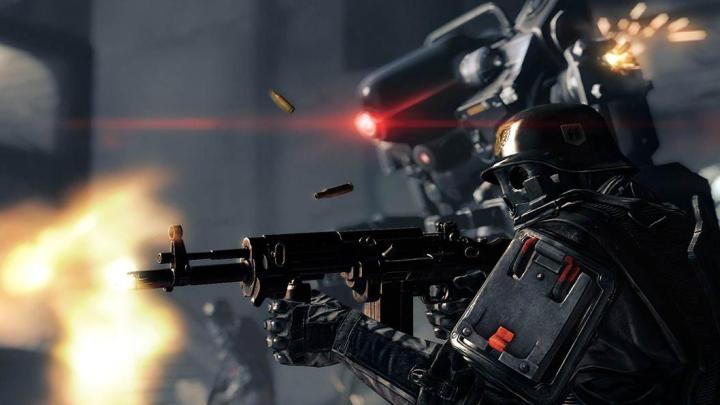
“Nothing is there by accident.”
Those words, uttered by Wolfenstein: The New Order creative director Jens Matthies, are important to remember as you play through what is easily one of the most energizing video games of 2014. Matthies and his team at Machine Games somehow delivered a new entry in the long-running series that is both refreshingly original and absolutely in the spirit of the games that preceded it.
— That’s because, as Matthies tells us, nothing is accidental about The New Order‘s design. From the way the story is built to engage the player on an emotional level, to the careful interweaving of exposition and play, there’s an emphasis on keeping you always present in the moment. It’s something that plot-driven video games tend to be half-successful with; you’re completely engaged when you’re staring down the barrel of your gun, and often similarly disengaged when a cinematic cutscene bridges the way to the next section of play.
“What would be the most horrible thing he could put you through?”
“It’s never a case where things get developed in a vacuum from each other. It’s always a collaboration. There’s always lot of conflict that arises through that; I’ll have a story idea and somebody else will have a gameplay idea, and they might be conflicting. Then we negotiate and discuss around that and try to find a solution where all parties are happy. It’s not until we get there that we move along to the next problem.”
The process helps to keep everything in sync, which is vital for a game with as many moving parts as Wolfenstein: The New Order. Equal parts sequel and reboot, the game plots out an alternate take on world history in which Germany won World War II. After an introductory sequence set during the wartime years, the game jumps forward to 1960. The world is ruled over by Nazis and their fascist ideals. Series hero B.J. Blazkowicz is a key member in a resistance movement that aims to bring down the toxic regime.
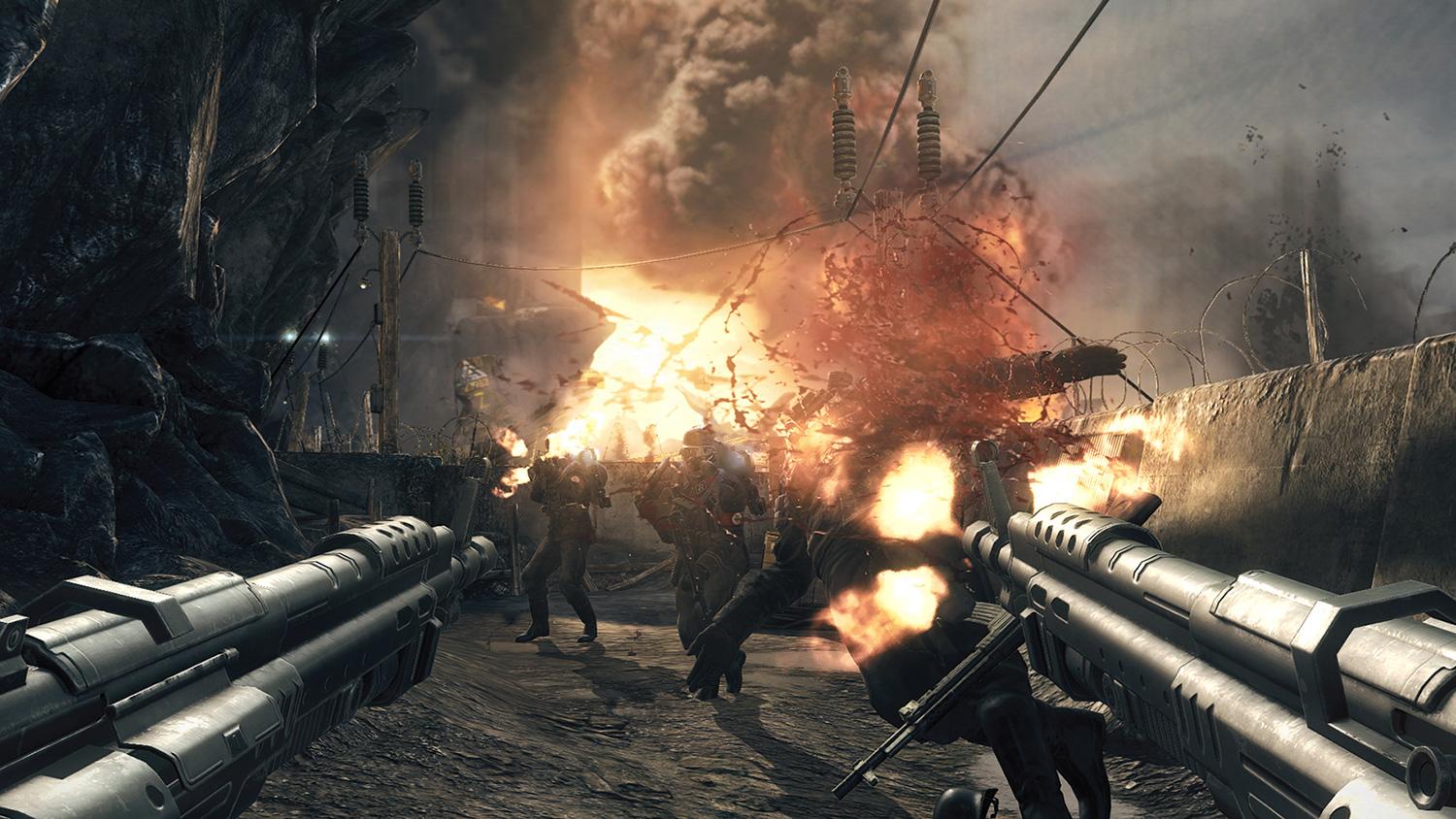
Editor’s note: Spoilers come with the territory when you dig into how a game was made. We’ll provide context when it makes sense, but you shouldn’t read any further if you don’t want certain aspects of the game’s story to be spoiled.
What’s unusual is the way the game’s story branches out in two different directions based on an early choice. The WWII sequence sets up B.J.’s 1960 reemergence — he’s gravely wounded at the end of the intro, and ends up convalescing in a European hospital for more than a decade. But it also introduces a number of other key characters, notably Fergus, a tough-as-nails veteran of many battles, and Wyatt, a young, green-gilled warfare noob. When Deathshead traps our three heroes at the end of the opening sequence, he presents his old nemesis B.J. with a simple decision to make: Which one dies?
“We are very focused on player motivation. What that means is, we like the player to be emotionally in sync with our protagonist,” Matthies explains. “So we use many methods to make player motivations and protagonist motivations align, and one of them is to put you as a player through the experiences that motivate the protagonist.”
There are two timelines in the game, influenced by whether you chose to save Fergus or Wyatt.
Again, nothing is accidental. For roughly two hours, you fight your way through a WWII-era Nazi castle in pursuit of Deathshead. Yes, the sequence serves to set up B.J. injury and introduce several key characters. But more than that, it’s there to establish relationships. Who is Fergus to you, as B.J.? Who is Wyatt? These aren’t things you actively think about, but the relationship to each character builds on an instinctive level as you fight alongside each soldier. Machine could just as easily have explained the alternate history using a cinematic and simply started the play side of the game in 1960, but you wouldn’t have those characters. Or that choice. And all of the ripples created by that choice.
Here we come to another of The New Order‘s wonderfully unique facets: The branching storyline. There are two timelines in the game, influenced by whether you chose to save Fergus or Wyatt. It’s a subtle thing. The main beats of the story are exactly the same no matter who you pick. Deathshead is the primary antagonist, and your journey to defeating him remains fundamentally the same. Yet certain characters and situations are entirely a product of B.J.’s choice.
“The parallel timelines came sort of as a consequence of that,” Matthies says. “If you make this choice, obviously it has to have ramifications later as well. We thought that was really cool. You know how some games have an alternate ending cutscene? For us, this would be something that affected the whole experience. You do it early on in the game and the vibe slightly changes for the rest of the game. We thought that was really powerful.”
“Deathshead is more of a classic villain.”
“I always saw Wyatt as this sort of son surrogate and Fergus as more of a father-figure to B.J.,” Matthies explains. “So there’s a contrast there, where we invite you as a player to be protective of Wyatt and be his guardian or mentor in some way. Not really deeply, but on some level that connection exists. And also, Wyatt only gives positive reinforcement. That’s how he communicates. He’s this force of enthusiasm. Whereas Fergus is more of a strict father-figure and he only gives negative reinforcement. There the sense is more that he can tell you what to do. If you’re with him, that gives you a little more safety.”
“That’s what the choice is about. It depends a lot on what kind of player you are. If you’re a player that deploys your own ethics into a game, the kind that would normally play a hero rather than a villain if the option exists, then you would have a moral imperative to save Wyatt. He’s younger and he technically has more life ahead of him, so morally, it’s the more defensible choice. Whereas if you’re the kind of player who likes to play a villain or is more about the raw fun factor of a game and not so much affected by your real-life morals, you would be more likely to choose Fergus. He’s a crazier character, more fun sort of.”
This same sort of deeper personality-building was applied to all of the major characters in Wolfenstein: The New Order, including the villains. Deathshead initially comes off as a caricature, the sort of cartoonish moustache-twirling Pure Evil villain that you’d traditionally expect from a Scary Nazi General. And yet even there, it’s not so simple.
“Deathshead is more of a classic villain. He’s obviously one of the legacy characters, and we really wanted to … get closure on the Deathshead conflict for people who have been fighting him over several games,” Matthies says. “Using that as our foundation, we wanted to find a really interesting angle on him. … The core of his essence is really that he is right where he wants to be in life. He has attained some sort of Zen-like happiness. He’s propelled by this enthusiasm and love of living, and he gets to do what he wants to do.”
Yes, we’re still talking about the primary Nazi villain in the latest entry for a series that emphasizes gunning down all the Nazis. “In the earlier game, he survived a zeppelin crash. So I was thinking about that sense of having survived the unsurvivable,” Matthies continues. “And of course that can lead to different emotional effects afterwards, but one of them is this newfound appreciation for life. Just appreciating every day you get to live. That’s infused into Deathshead and everything he does, that happiness.”
“The ending has a lot of purposes to fill.”
But what does it mean?
“The ending has a lot of purposes to fill,” Matthies says. “The whole game has this theme of dogma, and what it means to hold dogmatic beliefs. That ripples through all characters and all things that happen.”
He admits to coming up with the idea as he was doing research for The New Order and reading about Nazi programs. There was one, which started as an opt-in situation, where a committed Nazi could report having a child with some disability or another to the authorities. The government would then take the child away and it wouldn’t be the parent’s problem anymore. Over time, the program would grow to enforce mandatory participation.
“I think that’s symptomatic for any kind of belief system. When an ideology gets so ingrained that it’s beyond questioning, or it’s beyond critique from real world data then it turns into a problem,” Matthies continues. “If it’s about video games and you have your group of video game aficionados, out of that will rise ideas about how games should be. And that gets compounded over time, and [becomes] more and more extreme. That’s also the case for Nazism.”
As for B.J., victory is no storybook ending. “His dream is just the American Dream. Having a house and the kids and the dog and the car. That’s what he dreams about. And so, in order to win, he has to release this idea. He has to give up on it. That’s the only way he can conquer Deathshead.”
Editors' Recommendations
- PC classic Quake II is now on Xbox, PlayStation, and Nintendo Switch
- Wolfenstein 3D and more classic Bethesda games join PC Game Pass
- Star Wars Jedi: Fallen Order gets new modes in free May the Fourth update



